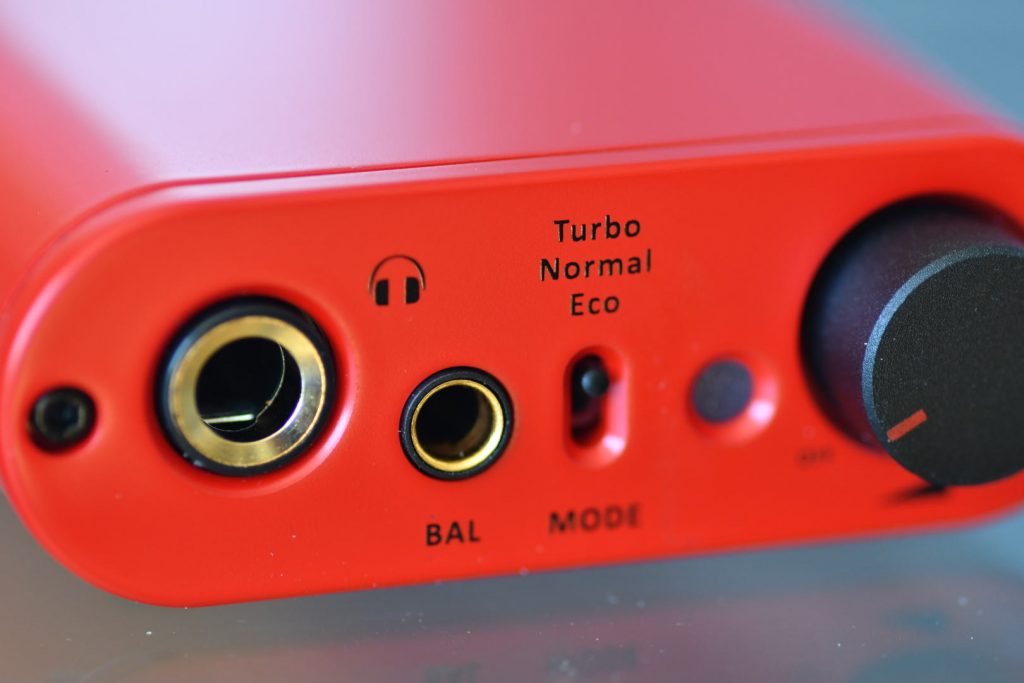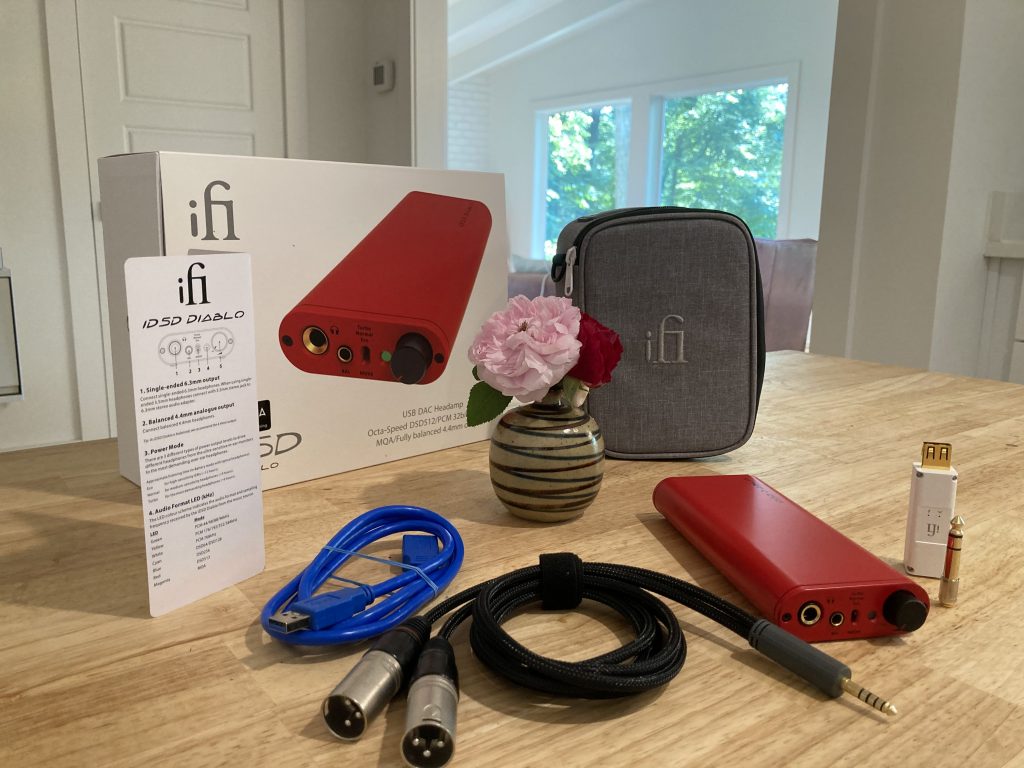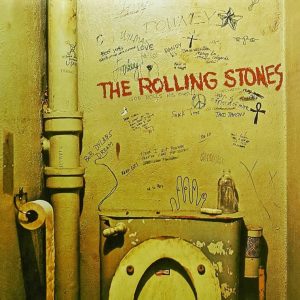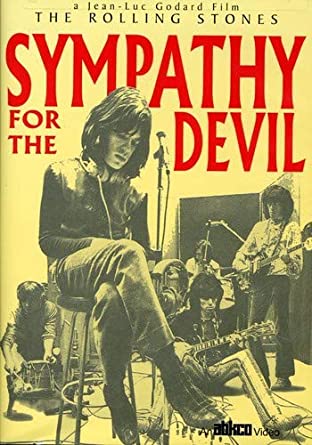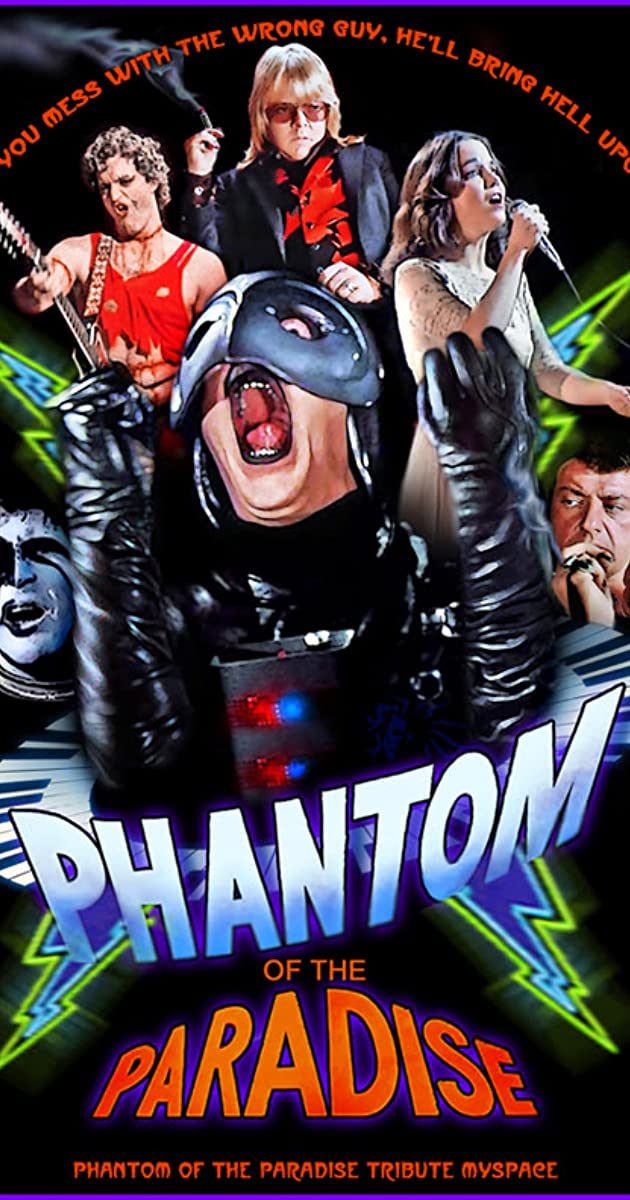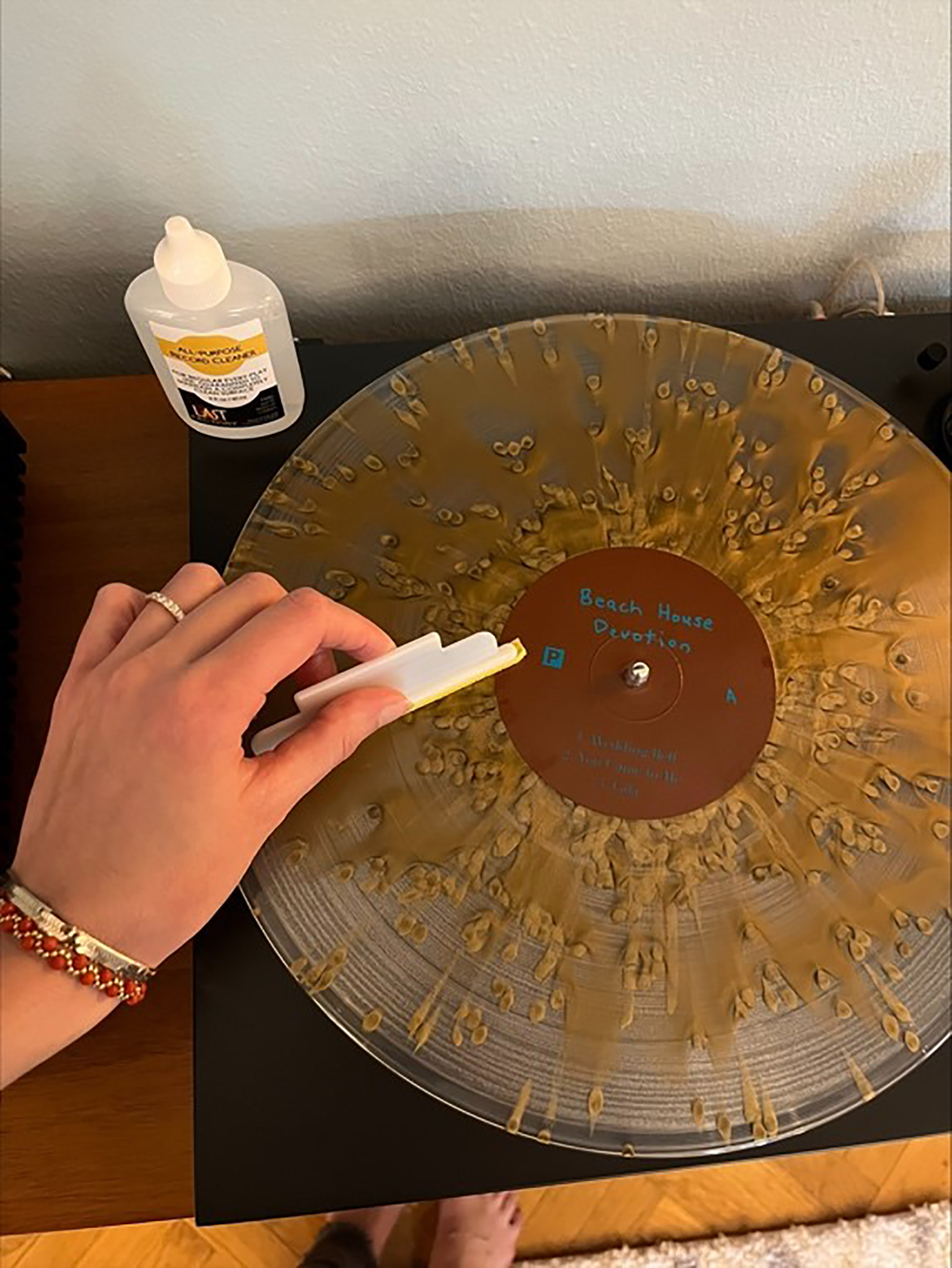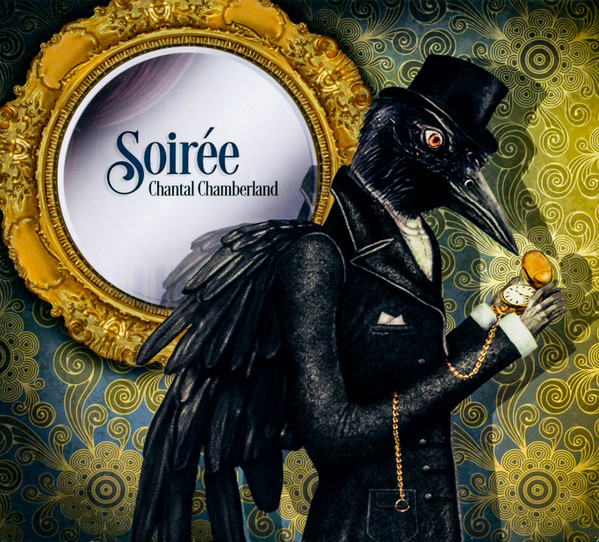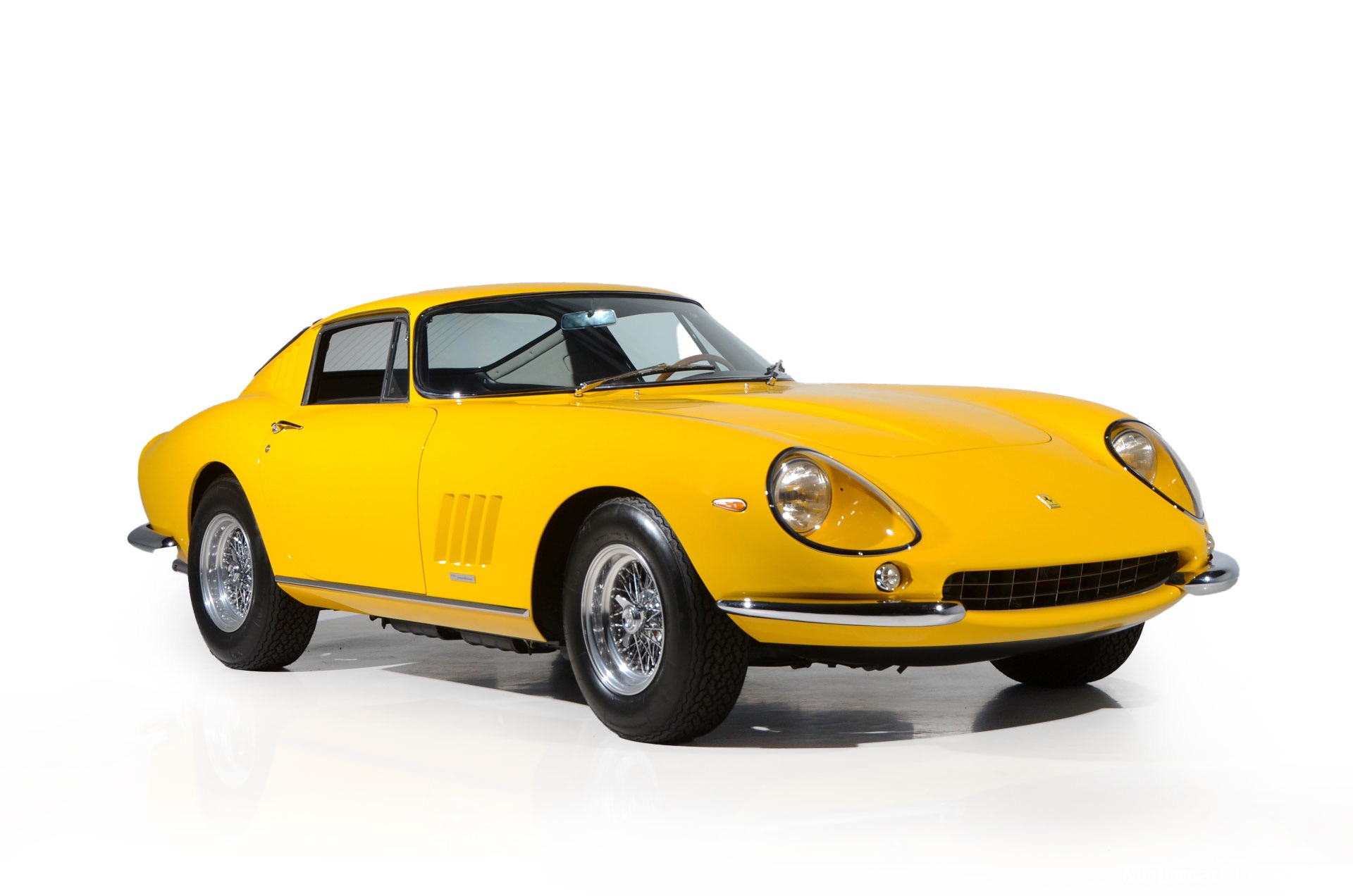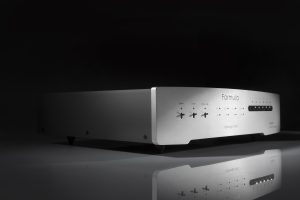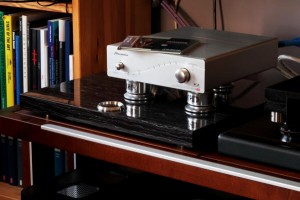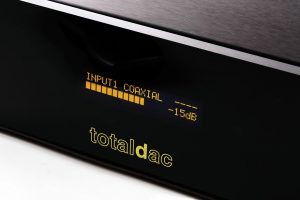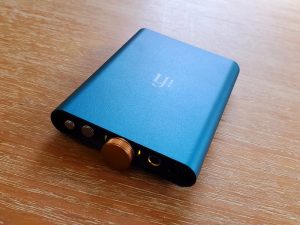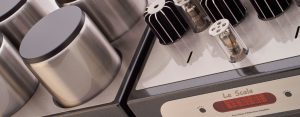We're all thinking about travel. Where can we go? How are we going to get there? And what will we listen to on our way?
The Diablo (Spanish for devil) is a battery-powered DAC/headphone amp that you'll be packing with you whether your next journey is to heaven, hell, or a more lateral journey across this earthly plane.
Let's start with the basics, what do you see before you listen? With the Diablo, the reddest of reds. The main context in which I evaluate shades of red is selecting lipstick, a situation when very often the first choice is the wrong one. Red is difficult to get right. It can be too orange, too pink, too purple, and yet when it's straight-ahead pure red, it's reminiscent of a firetruck. Given this no-win situation, the fine folks at iFi went for the pure red, and indeed my first thought was that you could hear the siren blare.
However, over months of seeing it in my bag, listening with it in hand, and playing with the knobs, I grew to appreciate the hue, at least a little bit, and appreciate another aspect of the finish quite a lot. The hue and texture combined to hide the fingerprints and scuffs that can plague brushed aluminum, so the Diablo exterior never revealed any signs of use. It's one of many features of the Diablo that belie a thoughtfulness of design. The Diablo has a heftiness that could just as easily be framed as sturdiness, and its two physical controls, a volume knob and a toggle switch between its three different "modes," offer a balance of smoothness and resistance that makes using these features luxurious to the fingertips. The weight, no doubt, comes from the substantial 4800 mAh battery housed within the chassis. The battery is a key engineering feature of the Diablo, which the company states as helping the amp maintain an "ultra-clean and stable DC current to avoid the issues that can be produced by mains electricity with its dips, spikes, and noise-inducing RFI/EMI pollution." Even on its highest quality mode (dubbed "Turbo" by iFi), I got a solid nine hours of use prior to the battery needing a charge. If, according to this layperson's metric (Turbo uses 12W of power, "Normal" uses 5W, the lowest level of music quality, "Eco" uses 2 watts) should you listen on Eco mode, you could listen for fifty-four hours on a single charge.
I. "While still man strives, he must err." – Goethe, Faust
Unfortunately, Goethe's warning has to be applied to iFi's Diablo. The sound produced by the Diablo is detailed, dynamic and non-audiophile conversion-level good, but using the Diablo on the road made me reflect on the current limits of portability for Hi-Fi experiences. The past decade has provided improvement after improvement in this regard. The jump in capability of streaming software has given hardware manufacturers the chance to push the frontier of listening technology to expand the flexibility of where and how we can listen to our music. The Diablo is one of the bleeding edge amp/DACs that endeavor to give us the quality we desire, anytime and anywhere, and it does achieve many of the qualifications for portability that I'm looking for in a DAC. But at times, I felt the Diablo was portable without being conveniently portable. For instance, on a train ride up the East Coast, my lap became a hodgepodge of cords. First, I unpacked the Diablo, and then I unpacked the USB iPurifier3—an adapter iFi includes with the Diablo to better improve the outflow of the audio. Then came a 3.5mm jack to the 6.3 mm single-ended headphone adapter, my headphones themselves, (I was listening on my B&W P5), and my laptop. Then, after my laptop died, I had to reconfigure the device with new adapters, which were not included with the Diablo, to plug it into my phone and keep listening. With the Diablo, iFi has created a device that can be configured to work with nearly any source, but it is not always easy to do this in a world that does not have standardized ports or chargers. When you have to do this on the fly…say when you are traveling and have limited space in your bag, or want to let a friend use the Diablo with their device, the advertised compatibility of the Diablo becomes a drawback to its portability. A good trip typically requires good planning anyway, and the key to the Diablo on the road is to think through your adapters before leaving the house.
"Friend of the devil is a friend of mine." – Grateful Dead
Diablo extends this penchant for compatibility into the realm of sound. I was excited to test out how the Diablo would perform on its different settings with different types of headphones. As quoted in iFi's press release, the Turbo setting is supposed to be for the highest quality, current-hungry headphones, Eco is for in-ear monitors, and Normal is for everything between the two. To get my feet wet, I put on the B&Ws and switched the Diablo to "normal" to listen, like my colleague Al Chiang to DMX and his classic Its Dark and Hell is Hot. The bass thumps, without being overwhelming or overshadowing, the growls and barks of the recently deceased Ruff Ryder. But I needed something a bit more dynamic for my test of the different levels, and so queued up the remastered Beggars Banquet. First up was Eco. I was disappointed—even with the suggested headphone selection, the sound was flat and soft. It felt like this level was not necessarily actualized for any particular headphones, but to do what its name suggests, to save battery power. But dare I ask, if I'm an audiophile who needs to save battery power, shouldn't I just turn off my DAC if it's not going to transform my listening experience? I can also just sit with my thoughts, eavesdrop, or hone my listening skills through a mindful observation of the train's rumble and bumps.
Thankfully, the Normal setting of the Diablo was a great leap forward and sounded comparable on the B&Ws to the Meridian Explorer II tier of DACs, with the detail and nuance present that you would expect from MQA identifying devices. But I wanted more. So, I upped my headphones to the AR-H1's and flicked the switch up to Turbo, and wow, I was willing to make a deal with the devil then and there. To return to Faust, "Mephistopheles, just prick my finger and show me where to sign!"
This level gives the listener the full extensive benefits of the device. The Burr-Brown DAC chip developed for the Diablo is working hard to enable PCM and DSD to take separate pathways through the circuitry of the device to remain lossless from the file to your ears, and the MOSFET op-amps drop the distortion to levels I would not have expected from such a compact device. The difference from the other two levels was so significant, it made me wonder which features exactly were shut off in these lower modes.
What was I hearing that drove this conclusion? I remember a few years back getting to see a screening of one of Jean Luc Godard's lesser-known films from the late sixties entitled Sympathy for the Devil. It's a pseudo-documentary that chronicles the recording of that track by the Rolling Stones. Seeing that album come together, while Brian Jones comes apart, added a personal element for me when later listening to the title track. There is a heartbreaking moment, when Jones is falling apart on his vocals and rather than confront or encourage him, the producer and the rest of the band just cut the recording coming from his mic. So, though Jones continues to sing throughout the film and the recording session, it is only he who hears his voice through the cans on his ears, while for the viewer and all the listeners of album, he simply disappears from the music. When you listen to this remastered track on this highest setting on the Diablo, the music comes to life in this same kind of revealing detail—moment by moment and clear as the side of the hotel magnifying mirror you never should flip. You can hear Jones's giggles before his mic is cut, you can hear the annoyance in Keith's guitar. Then you hear the silence of Jones while the rest of the band fall into a groove that would last for the next five years. Its demonically awesome.
After this dive, I wanted to get a sense of the Diablo's range. So, I tuned up the soundtrack to Phantom of the Paradise. A surprisingly complicated little record, fully enjoying its tracks requires a DAC that can handle delicate pianos, belting harmonies, and an occasional throaty scream. Never once did the Diablo fail to fully distinguish between each beat, be it by bass, high hat, or voice. Now I was hooked and started to try and find something that the Diablo couldn't handle. How about the Dead? American Beauty, remastered for the 50th anniversary of its release, was a sonic rose, Jerry's fingers alive with movement in my ears. Number of the Beast? I turned it up to 11 and the definition remained acute. I moved over to Primephonic and tuned up something a bit more delicate—Bax's "The Devil that Tempted St. Anthony." A short piece written for two pianos, it is written with a heavy foot on the sostenuto pedal that helps to meld the hands of the players together throughout the piece. It is, in other words, intentionally muddy. Despite this, the turbo-charged Diablo performed with aplomb and gave distinction to the players, despite their efforts to become one.
I then plugged it into my phone to see if I experienced any change in quality. Nope. The MQA files from Tidal came through clear as a bell. Using high-res streaming apps on my phone was my favorite configuration for the Diablo. Even with the headphones-adapter-DAC-adapter-phone chain, it was far less cumbersome than with my laptop which required the use of the iPurifier 3 provided by iFi. This adapter was very clearly not designed for the Diablo as its width is greater than the Diablo's resulting in a DAC that's rocking on my desk while I groove and type.
In contrast, with the phone configuration, a Lighting to USB A adapter (also known as a camera adapter) resulted in a relatively sleek and stable set-up, but that adapter was not included with the Diablo. I did not get a chance to explore all of the configurations that Diablo's many ports afford. I don't doubt that the S/PDIF input and 4.4 Pentaconn output for "tougher headphone loads" would only improve the user experience with the Diablo. After all, while on Turbo, the Diablo took everything I threw at it and gave it an orphic quality, and this listener thinks it may be worth selling your soul to listen.
iDSD Diablo DAC/Amplifier
Retail: $899
iFi




